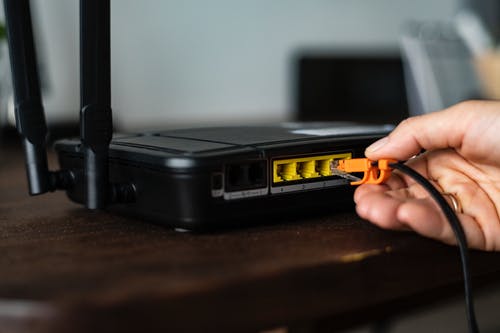You shouldn’t just assume that your network is secure. It’s important that you check the network regularly, to know who is using your router. Security can be poor if you don’t even change the default password. If you know who is using the router regularly, then you can be sure that everything will work well. The router web UI should show who is currently connected. However, depending on the router model, you may need to dig through multiple menus. It can be tricky to find this information. As an example, it could be hidden under the DHCP Client List section. Find out whether the router can notify you each time a new user is connected. There should also be a historical record that shows us people who connected to the network in the past 7 days. This way, you can detect unauthorized users or users who are connected too long in the network.
Consider using enterprise-level monitoring tools, like AirMagnet. However, some of these tools are too expensive for small business and average home users. To see people who are connected to your network, you may check DHCP client list or “Attached devices”. It is also possible to see the IP address and the device used to connect with your network. Network Magic is a tool that offers a useful map and a network histogram timeline, so you will know who has connected and when it happened.
Another issue with router management is whether you can change DNS easily. Most of the time, we don’t give DNS settings any further thought. With a normal broadband connection, you will automatically get DNS settings. However, in a dedicated enterprise network, you may have an internal DNS server. Small businesses and home users may need to choose an alternative DNS provider. There are plenty of benefits with using your own DNS. First of all, users will get better browsing performance and they will be better protected against malware and phishing. However, the actual performance boost could vary widely depending on the Internet provider. There are a few alternative DNS that you can use, such as Google Public DNS and OpenDNS.
Getting support from your router vendor can be tricky sometimes. Some router models don’t allow you to use alternative DNS settings. To complicate things further, the setup configuration may not allow you to change DNS provider. So, if you decide to choose an alternative DNS, you should make sure that your router supports that. One way to confirm this is to open the web-based setup display and find out whether you can change DNS address from there. After you successfully change the DNS settings, use monitoring tool to ensure that there’s real speed difference, si it will worth the effort. As mentioned above, any speed boost could depend on the Internet provider. If the provider isn’t too optimized, then using an alternative DNS will give you real boost in speed. If you can’t detect any meaningful improvement from using an alternative DNA, you need to make sure that you can easily go back to the default settings.


















